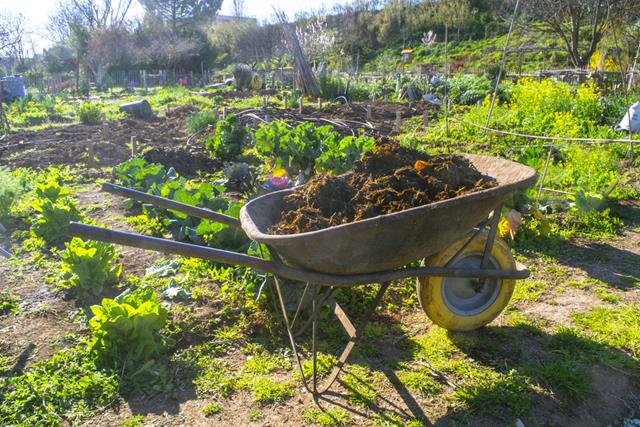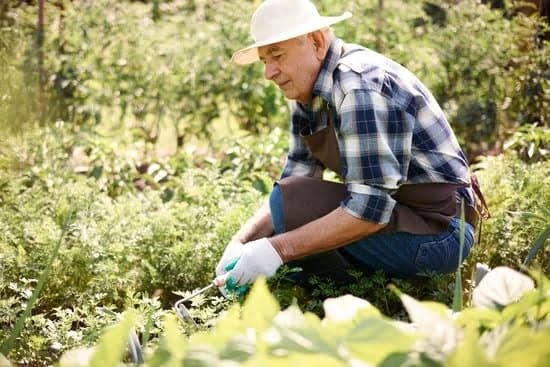Are you interested in cultivating your own vegetable garden? Proper gardening techniques in planting vegetables are essential for successful growth and a bountiful harvest. In this article, we will explore the importance of using effective planting methods and the benefits they can bring to your vegetable garden.
Selecting the right location for your vegetable garden is crucial for its overall success. Factors such as sunlight, soil quality, and water drainage play a significant role in ensuring that your vegetables thrive. We will discuss the significance of choosing a suitable location and provide guidance on how to do so effectively.
Soil preparation and maintenance are fundamental aspects of vegetable gardening that should not be overlooked. Properly preparing the soil for planting, as well as regular maintenance, are essential for the healthy growth of your vegetables. We will provide detailed instructions on how to prepare and maintain the soil to support optimal vegetable growth.
Choosing the Right Location for Your Vegetable Garden
When it comes to gardening techniques in planting vegetables, one of the most crucial factors is choosing the right location for your vegetable garden. The success of your vegetable plants greatly depends on the location where they are planted. Here are some important considerations when selecting a suitable location for planting vegetables:
- Sunlight: Ensure that your vegetable garden receives an adequate amount of sunlight throughout the day. Most vegetables require at least 6-8 hours of direct sunlight to thrive. Choose a spot in your yard that is not obstructed by tall trees or structures that may cast shade on your plants.
- Soil Quality: The quality of the soil in your chosen location is essential for the healthy growth of vegetables. Conduct a soil test to determine its pH level and nutrient content. If necessary, amend the soil with organic matter such as compost or manure to improve its fertility and structure.
- Water Drainage: Proper water drainage is critical for preventing waterlogged soil, which can lead to root rot and other issues. Avoid low-lying areas that tend to retain water and opt for a well-drained spot for your vegetable garden.
By carefully considering these factors, you can ensure that your vegetable garden is set up for success from the very beginning. Selecting the right location will provide your plants with optimal conditions for growth and production, ultimately leading to a bountiful harvest of fresh, homegrown vegetables.
Soil Preparation and Maintenance
Importance of Soil Preparation
Proper soil preparation is essential for the successful growth of vegetables in a garden. It provides a suitable environment for the roots to establish, absorb nutrients, and support healthy plant growth. Adequate soil preparation also helps improve water retention and drainage, which are crucial factors in vegetable gardening.
Steps for Soil Preparation
To prepare the soil for planting vegetables, start by clearing the area of any debris, weeds, or rocks. Once the area is cleared, loosen the soil to a depth of at least 12 inches using a shovel or garden tiller. This allows air and water to penetrate the soil more easily. After loosening the soil, it’s important to incorporate organic matter such as compost or well-rotted manure to improve its fertility and structure.
Importance of Regular Maintenance
After planting vegetables, it’s crucial to maintain the soil’s quality throughout the growing season. Regular maintenance practices such as mulching, weeding, and adding additional compost can help replenish nutrients and maintain optimal soil conditions for healthy vegetable growth. Monitoring the soil pH levels and making necessary adjustments is also important to ensure that the vegetables have access to essential nutrients.
Selecting the Best Vegetable Varieties for Your Garden
When it comes to selecting the best vegetable varieties for your garden, it is essential to consider the climate and soil type of your location. Different vegetables thrive in different conditions, so choosing the right varieties can greatly impact the success of your garden. It is important to research which vegetables are well-suited for your specific growing environment and to select varieties that are known to perform well in similar conditions.
Exploring Different Types of Vegetable Varieties
There are various types of vegetable varieties, each with its own unique characteristics and ideal growing conditions. Some vegetables, such as tomatoes and peppers, prefer warm climates with plenty of sunlight, while others like lettuce and spinach thrive in cooler, shadier areas. By understanding the specific needs of each type of vegetable, you can make informed decisions about which varieties will be most successful in your garden.
Recommendations Based on Climate and Soil Type
In addition to considering the general climate of your region, it is also important to take into account the specific soil conditions of your gardening area when selecting vegetable varieties. Some vegetables, such as carrots and potatoes, require well-drained soil with good aeration, while others like cucumbers and squash prefer richer, more moisture-retentive soil.
By choosing vegetable varieties that are well-suited to your particular climate and soil type, you can optimize the success of your garden and ensure a bountiful harvest.
By carefully researching and selecting the best vegetable varieties for your garden based on climate and soil type, you can set yourself up for a successful gardening season. Whether you are planting in a hot, sunny climate or a cooler, shadier area with different soil compositions, there are numerous vegetable varieties available that can thrive in your garden with the proper care and attention.
With the right selection of vegetable varieties tailored to your specific growing conditions, you can look forward to a productive and rewarding gardening experience.
Planting and Sowing Techniques
When it comes to planting and sowing techniques in vegetable gardening, there are several important factors to consider in order to ensure successful growth. One of the first steps in this process is to determine whether you will be planting seeds or seedlings. For seeds, they should be planted at the recommended depth and spacing for each type of vegetable.
It’s essential to read the instructions on the seed packet to ensure proper planting. For seedlings, they should be transplanted carefully into well-prepared soil, with enough space between each plant for optimal growth.
Spacing is crucial when it comes to planting vegetables. Each type of vegetable has specific spacing requirements, and overcrowding can lead to stunted growth and poor production. Proper spacing allows for adequate air circulation and reduces competition for nutrients, resulting in healthier plants overall.
In addition to proper spacing, it’s essential to consider the timing of planting. Different vegetables have different ideal growing conditions and seasonal preferences. For example, cool-season vegetables like lettuce and spinach thrive in cooler temperatures, while warm-season vegetables such as tomatoes and peppers require warmer weather for optimal growth.
By following these crucial planting and sowing techniques in vegetable gardening, you can set your garden up for success from the very beginning.
| Planting Tips | Description |
|---|---|
| Proper Spacing | Ensure that each plant has enough space for optimal growth and production |
| Timing | Consider the ideal growing season for each type of vegetable before planting |
| Seed or Seedling Care | Follow instructions on seed packets or provide careful transplanting for seedlings |
Watering and Irrigation Practices
When it comes to gardening techniques in planting vegetables, proper watering and irrigation practices play a crucial role in the successful growth of vegetable plants. Adequate water supply is essential for providing the necessary nutrients to the plants and maintaining their overall health. It is important to note that different vegetables have varying water needs, so it is crucial to have a good understanding of how much and how often each type of vegetable should be watered.
One effective method for watering vegetable plants is through the use of drip irrigation systems. These systems deliver water directly to the base of each plant, minimizing water wastage and ensuring that the roots receive adequate moisture. Mulching around vegetable plants can also help retain soil moisture and reduce the frequency of watering. Additionally, timing plays a critical role in watering – it is best to water your vegetable garden in the early morning or late afternoon to minimize evaporation.
Overwatering can lead to root rot and other diseases, while underwatering can result in stunted growth and poor yield. Therefore, it is important for gardeners to strike a balance and monitor soil moisture regularly. The use of moisture meters can be helpful in determining when it’s time to water the vegetable plants.
In summary, mastering proper watering and irrigation practices is essential for successful vegetable gardening. By understanding the specific water needs of different vegetables, utilizing efficient watering methods, and monitoring soil moisture, gardeners can ensure healthy plant growth and bountiful harvests.
| Gardening Techniques | Planting Vegetables |
|---|---|
| Watering Techniques | Irrigation Methods |
| Drip Irrigation Systems | Mulching Benefits |
| Root Rot Prevention | Importance of Soil Moisture Monitoring |
Pest and Disease Management
Pests and diseases can wreak havoc on a vegetable garden if not properly managed. Implementing effective pest and disease management techniques is crucial in ensuring the healthy growth of your vegetable plants. By using organic and chemical-free methods, you can prevent and control common issues that may arise in your garden.
One of the most important steps in pest and disease management is regular monitoring of your vegetable plants. Keep a close eye on the leaves, stems, and fruits for any signs of pest infestation or disease development. Early detection allows for prompt intervention, increasing the likelihood of successful control.
When it comes to preventing pests and diseases in your garden, practicing good hygiene is essential. Keep your gardening tools clean and sanitized to prevent the spread of potential pathogens. Additionally, removing any diseased or infested plants as soon as possible can help prevent further spread within the garden.
Incorporating companion planting techniques can also aid in pest management. Certain plants have natural defenses against pests, and by interplanting them with your vegetables, you can potentially deter harmful insects from attacking your crops. For example, planting marigolds alongside your vegetables can repel nematodes, while attracting beneficial insects such as ladybugs that feed on aphids.
By implementing these pest and disease management strategies, you can protect your vegetable garden from potential threats while promoting a healthy and bountiful harvest using effective gardening techniques in planting vegetables.
Harvesting and Maintenance
In conclusion, effective gardening techniques in planting vegetables are crucial for the successful growth and maintenance of a bountiful vegetable garden. By following proper methods for choosing the right location, preparing the soil, selecting suitable vegetable varieties, and implementing effective planting and sowing techniques, gardeners can ensure healthy and productive vegetable plants. Additionally, paying attention to watering and irrigation practices, as well as pest and disease management, is essential for the sustained growth of vegetables.
One of the key aspects of maintaining a thriving vegetable garden is knowing when and how to harvest different types of vegetables. Timely harvesting not only ensures that vegetables are at their peak flavor and nutrition but also encourages continuous production. Ongoing maintenance tasks such as weeding, fertilizing, and monitoring for pests and diseases are also vital in sustaining a healthy vegetable garden.
Frequently Asked Questions
What Method of Planting Is Best Used on Vegetables?
The best method of planting for vegetables depends on the specific type of vegetable being grown. Generally, the most common methods include direct seeding and transplanting seedlings. Direct seeding is suitable for larger seeds like beans and peas, while transplanting is ideal for smaller seeds like tomatoes and peppers.
What Is the Best Way to Plant a Vegetable Garden?
The best way to plant a vegetable garden is to choose a location with plenty of sunlight, well-drained soil, and access to water. It’s important to prepare the soil by loosening it and adding organic matter before planting. Planting in rows or raised beds can also optimize space and yield.
What Is the Best Way to Layout a Vegetable Garden?
The best way to layout a vegetable garden is to consider the needs of each vegetable in terms of spacing, sunlight, and water requirements. Grouping together vegetables with similar needs can help optimize space and make maintenance easier. Additionally, considering succession planting and crop rotation can maximize productivity while maintaining soil health.

If you’re looking to get into vegetable gardening, or are just looking for some tips on how to make your current garden better, then you’ve come to the right place! My name is Ethel and I have been gardening for years. In this blog, I’m going to share with you some of my best tips on how to create a successful vegetable garden.





